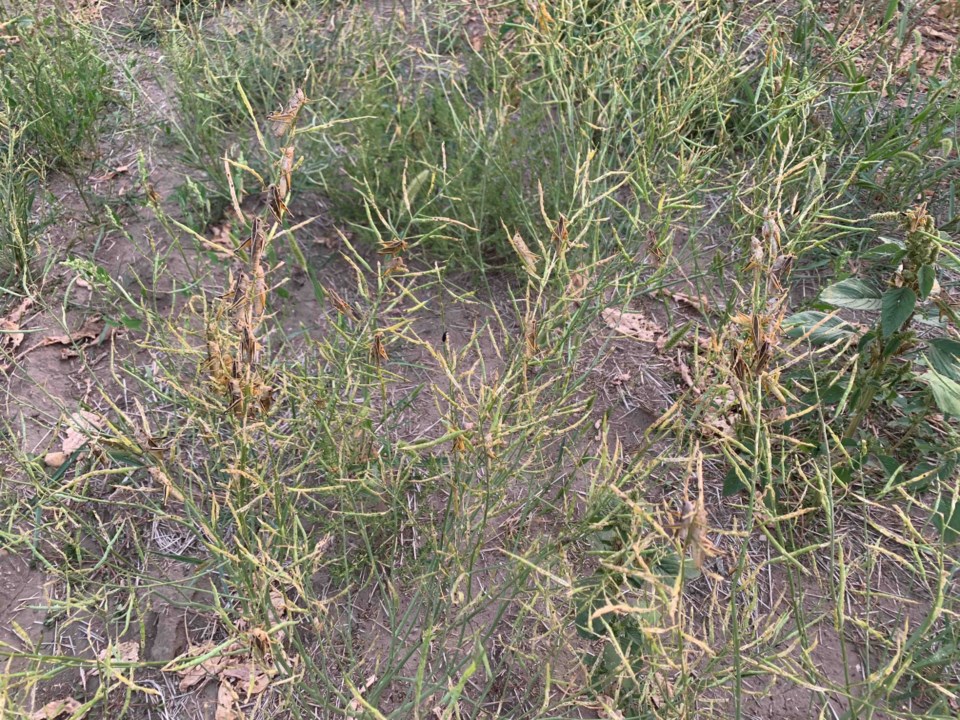Grasshopper levels have resulted in some control in the Northwest region, mainly on cereals, and in the Interlake region, on cereals, alfalfa, forage grasses and pastures. There are reports of true armyworm in several fields in the Interlake, including fescue, timothy, spring cereals and hay fields, requiring some insecticide treatment. True armyworms were also noted in spring wheat in the Eastern region, but below threshold levels. Diamondback moth larvae are being noticed in some canola fields, but so far just at below threshold levels.
Grasshopper levels have resulted in some control in the Northwest region, mainly on cereals, and in the Interlake region, on cereals, alfalfa, forage grasses and pastures. There are reports of true armyworm in several fields in the Interlake, including fescue, timothy, spring cereals and hay fields, requiring some insecticide treatment. True armyworms were also noted in spring wheat in the Eastern region, but below threshold levels. Diamondback moth larvae are being noticed in some canola fields, but so far just at below threshold levels.
The population of adult moths of bertha armyworms are being monitored during the flight and egg-laying period in June and July using pheromone-baited traps. Bertha armyworms have been found in 85 out of 86 traps that counts were reported from so far. Cumulative counts remained in the low risk category in most traps, however traps near Makaroff (Northwest), Kenton (Southwest), Carman (Central), and Lundar and Pleasant Home (Interlake) have increased into the uncertain risk category. The highest cumulative trap count so far is 506 from a trap near Makaroff in the Northwest region.
Larvae of armyworms (Mythimna unipuncta), sometimes also called true armyworms, can cause significant feeding injury to cereals and forage grasses when levels are abundant. Adult moths of armyworms migrate to Manitoba in the spring from overwintering sites from the southern US. A network of pheromone-baited traps are being monitored from early-May until late-July to determine how early and in what levels populations of armyworms have arrive. Armyworm moths have been caught in all 32 traps. The highest cumulative counts so far have been in the Interlake region, where there are three traps with cumulative counts above 200. All three traps in the Eastern region have cumulative counts ranging from 88 – 212. In the Southwest region, there are three traps with cumulative counts above 40.

